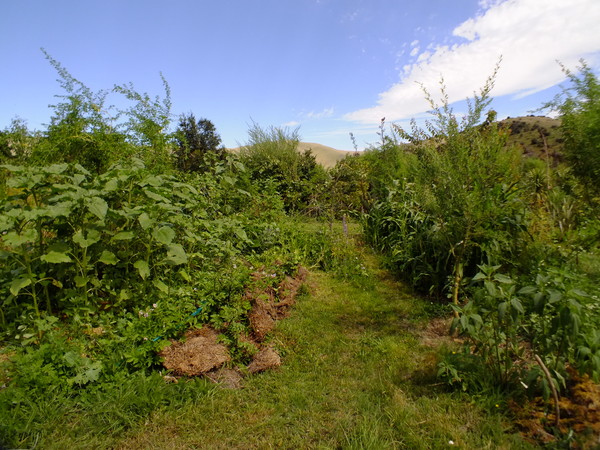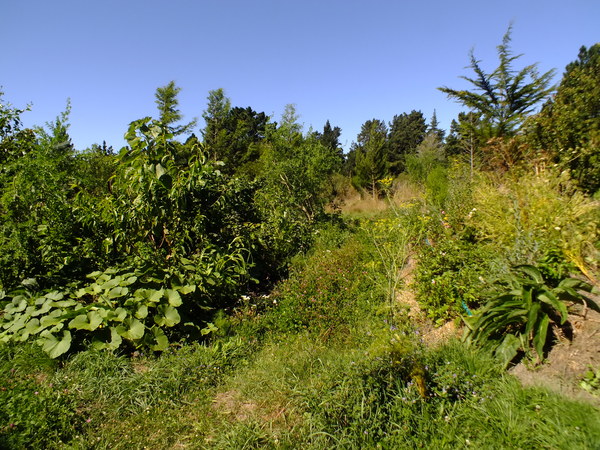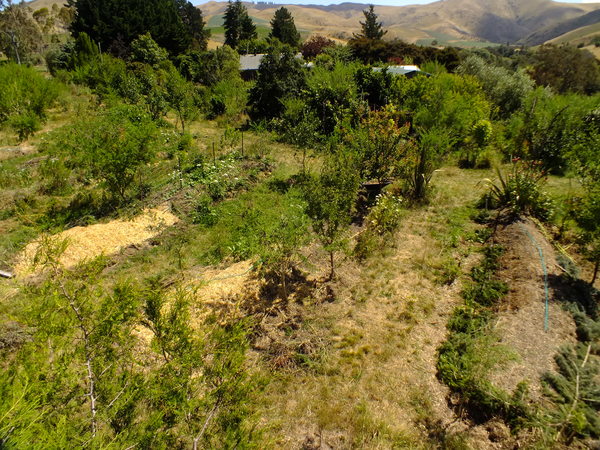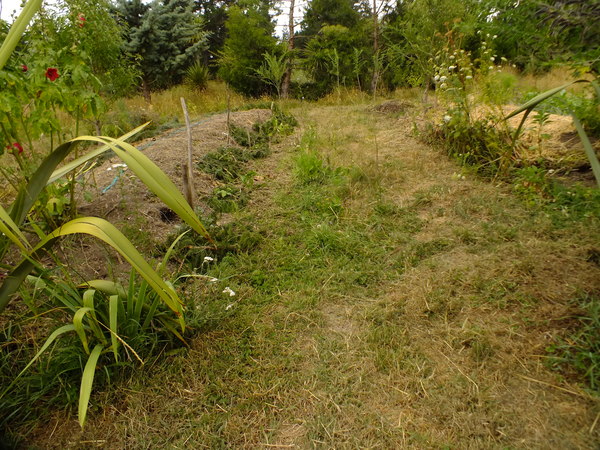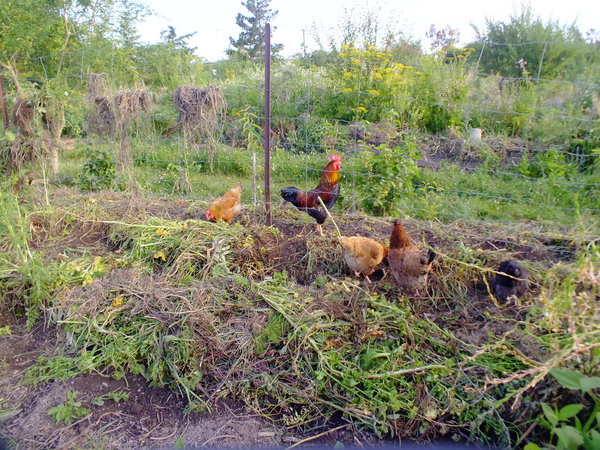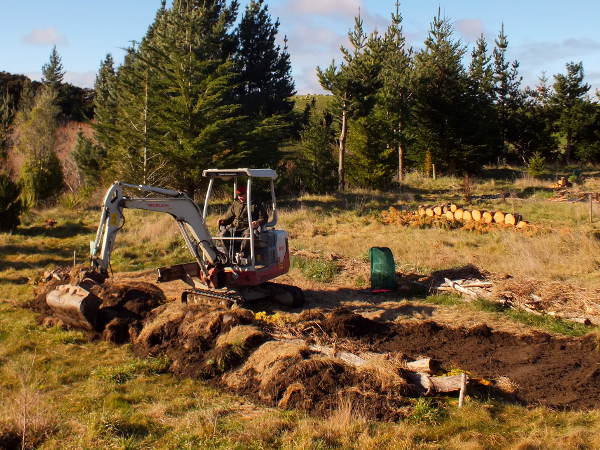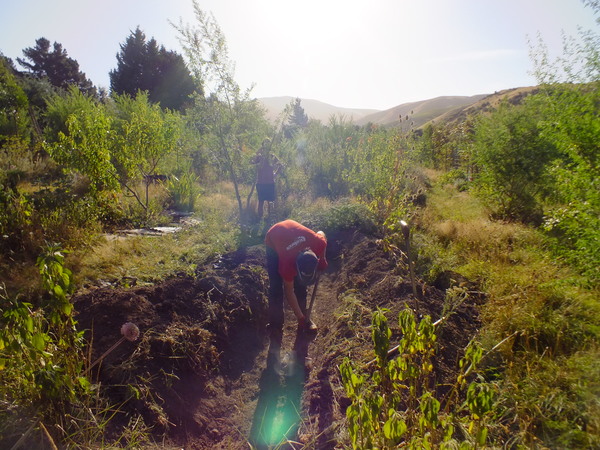Working with hugelkultur gardens for perennial plants and season crops
My overall impressions of using hugelkultur beds for growing both perennial plants and seasonal crops is positive. If you have ready access to the required materials as well as time and energy to construct the mounds then I thinks it is well worth it. Especially if you are also interested in adding some dimension and texture to the shape of the land.
Initially, at least with our construction approach, the best place for growing is along the edges where the mounds blends back into the original ground level. But as the whole lot breaks down and the air pockets collapse and disappear the consistency and usability gets more uniform.
Weed control
During the construction phase we simply scraped a layer of topsoil from the uphill side of the log mound and used this to cover the pile of logs. Because this soil still had living grass, which promptly regrew in its new location on the mound, we had a weed problem from the very beginning. Using heavy mulch and crops such as potatoes that required digging we were able to remove the grass reasonably quickly. However, in hind sight, it would be sensible to kill the grass first or immediately after construction with something physical like weed matting.
If you like to plant things in rows (which would work well enough along the length of the mound) and wish to weed between the rows with some kind of tool such as stirrup hoe, then you may have some difficulty working on the angled sides of the mound. We tend to use a blanket / broadcast seeding approach where we cover the entire face with a selection of compatible species. This generally leaves little room for weeds and requires some thinning as plants develop.
Chickens
Because our chickens get to roam freely through much of the garden areas we have had to develop some techniques to work with their tendency to scratch around in freshly disturbed soil. Two similar approaches are serving us well. After spreading seeds and covering with a thin layer of straw mulch I either lay down wire netting or cover the area with tree trimmings that are heavy enough to stop the birds moving them. The protection either stays in place until the plants are big enough to be safe or until the area is ready to be replanted.
Chickens tend to scratch material down hill and so if they have access to loose soul on the mounds they can flatten them out. However their action (and manure) all help to break up the soil and woody material which can quickly be raked back into shape.
Perennial plants
The fruiting plants (feijoas, almonds, apricot and plums) and support trees (mainly tagasaste and Italian alder) that we have planted so far have done exceptionally well.
Having witnessed on many occasions how the roots of perennial plants love to penetrate and burrow through decomposing wood I can see how hugelkultur is ideal for these long lived plants.
